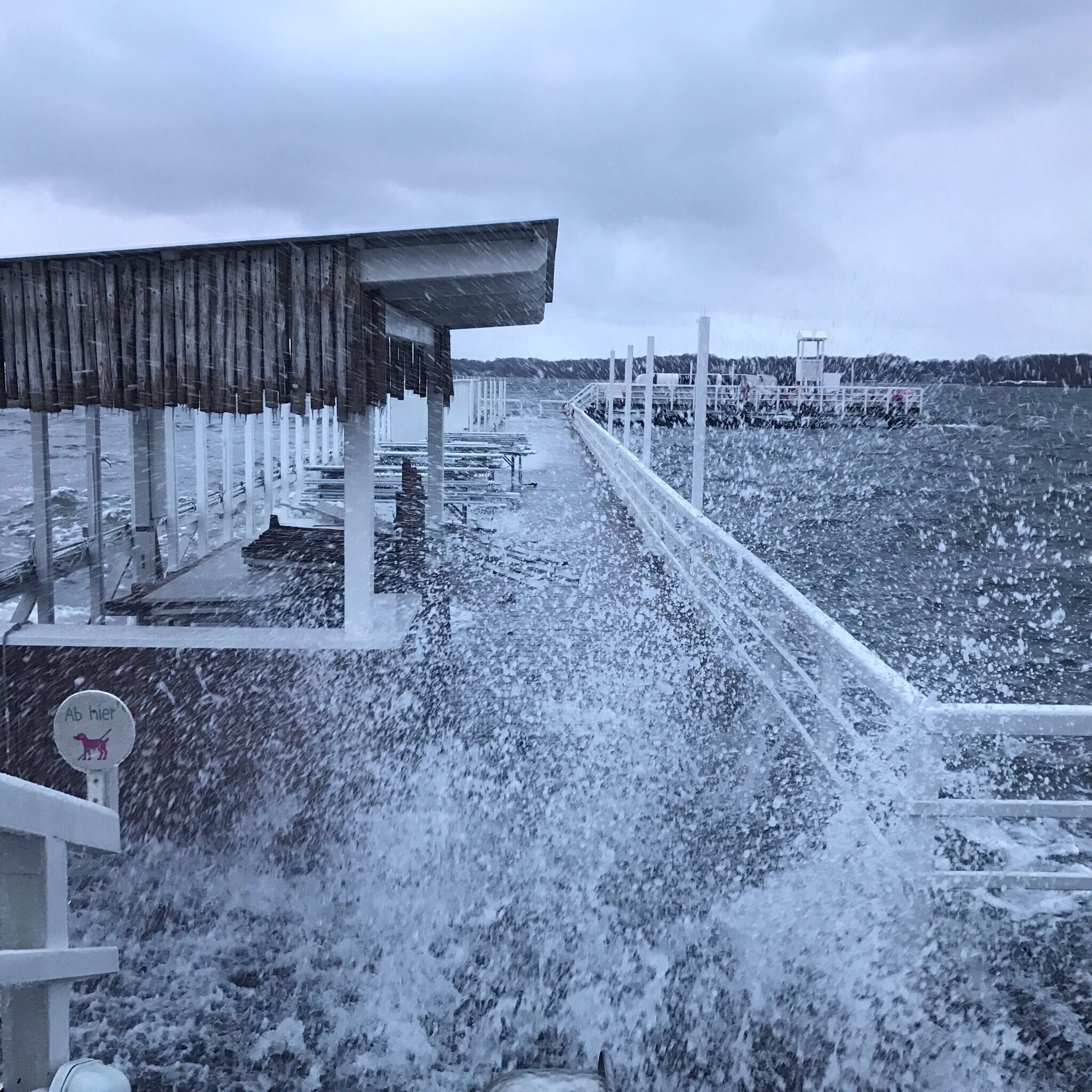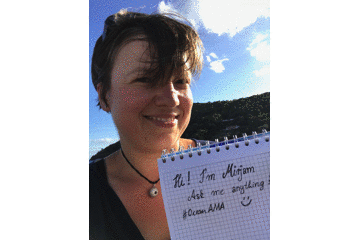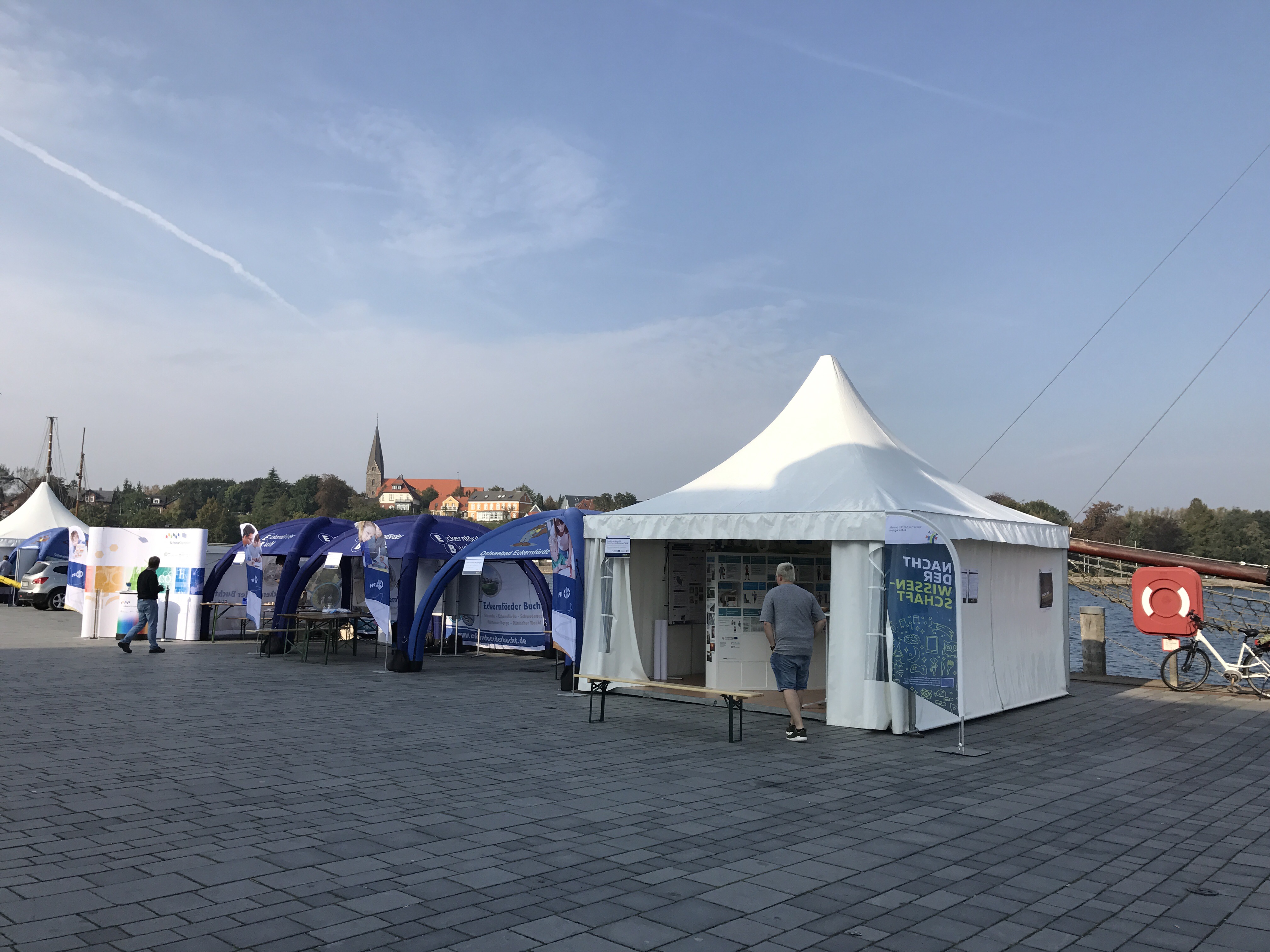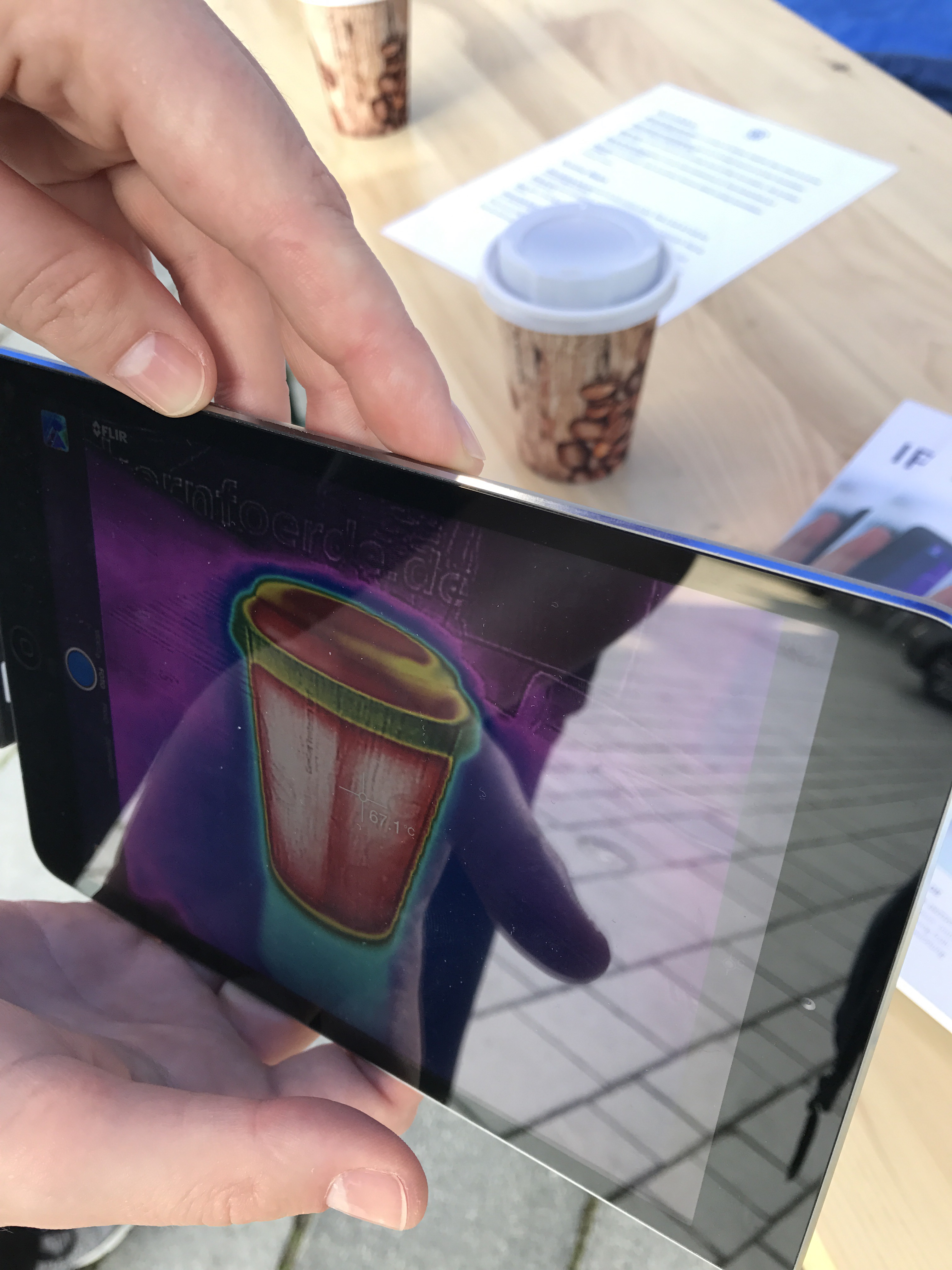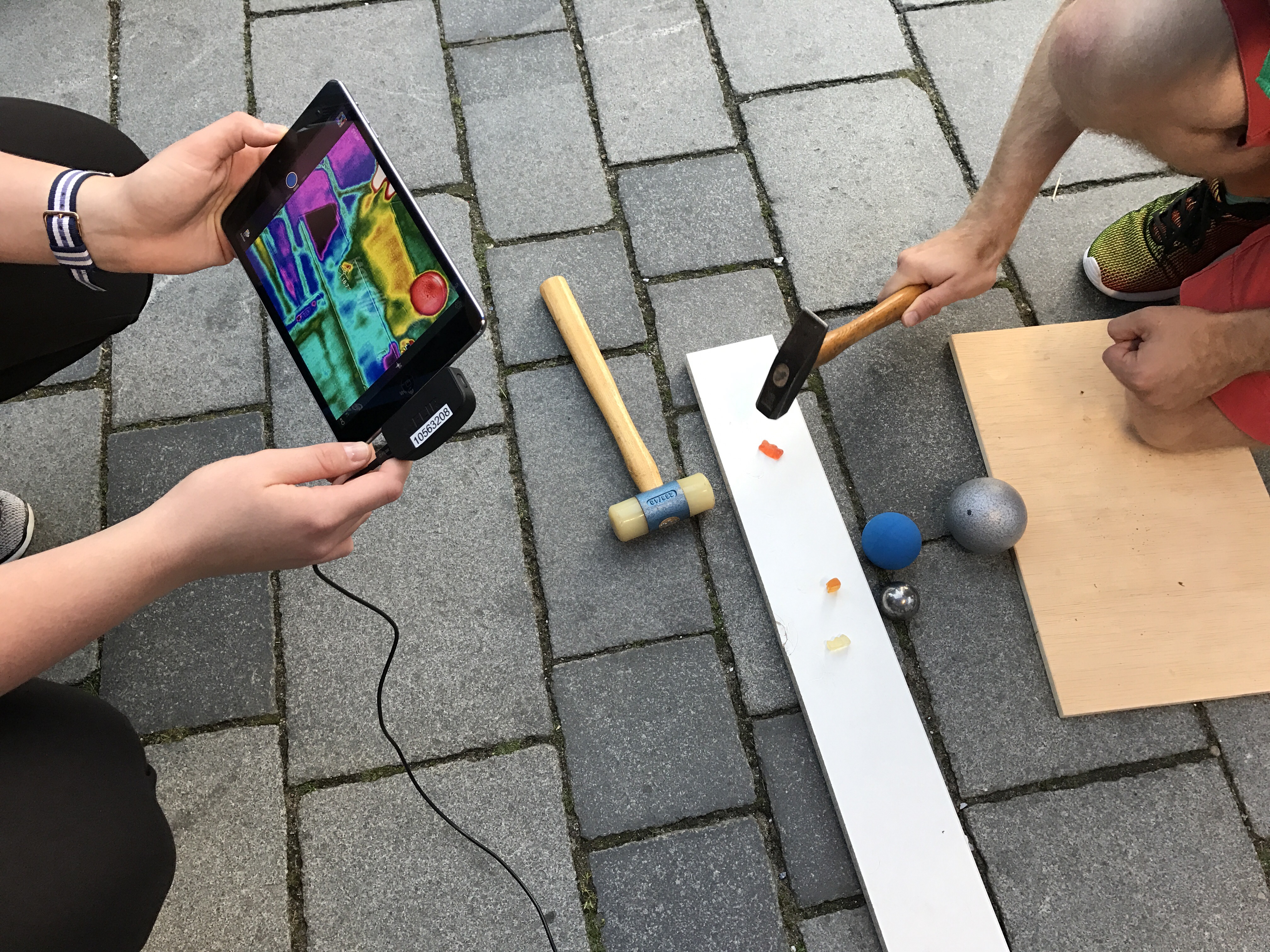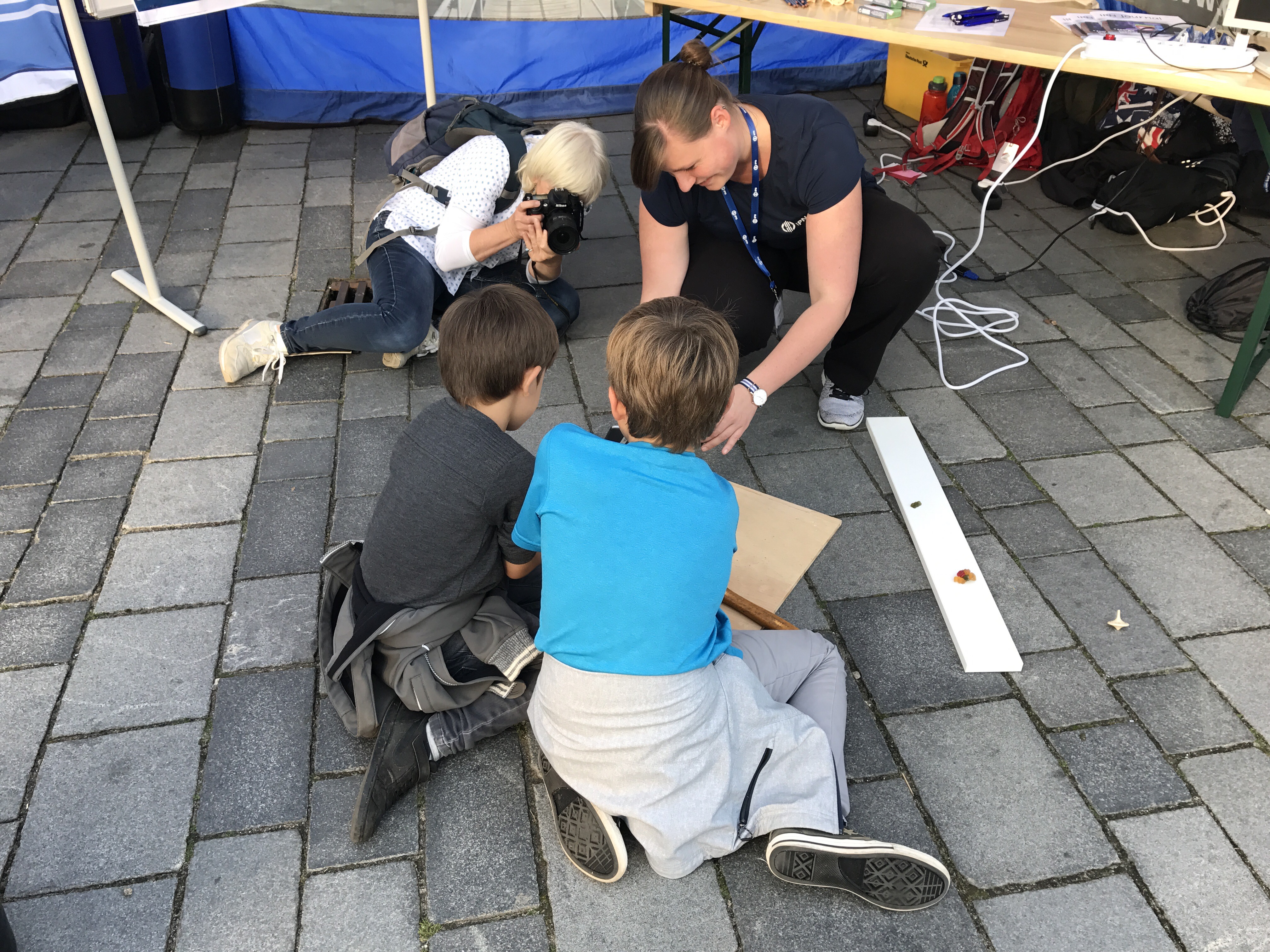In my personal #SciCommChallenge, one thing on my things-to-try list were “grubletegninger” — pondering sketches, or sketches to ponder. It’s a format developed in Norway and there is quite a collection available at naturfag.no. (And that my sketches below happen to be on a Norway-themed note pad is pure coincidence :-))
The idea is that the sketch of a situation is given, along with a couple of people who each give a statement explaining the situation. For example on the topic of whether a sundial can be used in both hemispheres, the characters state things like “yes, you just have to position it the other way round”, “yes, if you swap the numbers”, “no, because the sun moves in the opposite direction”, “it will work, but with a 12 hour offset”.
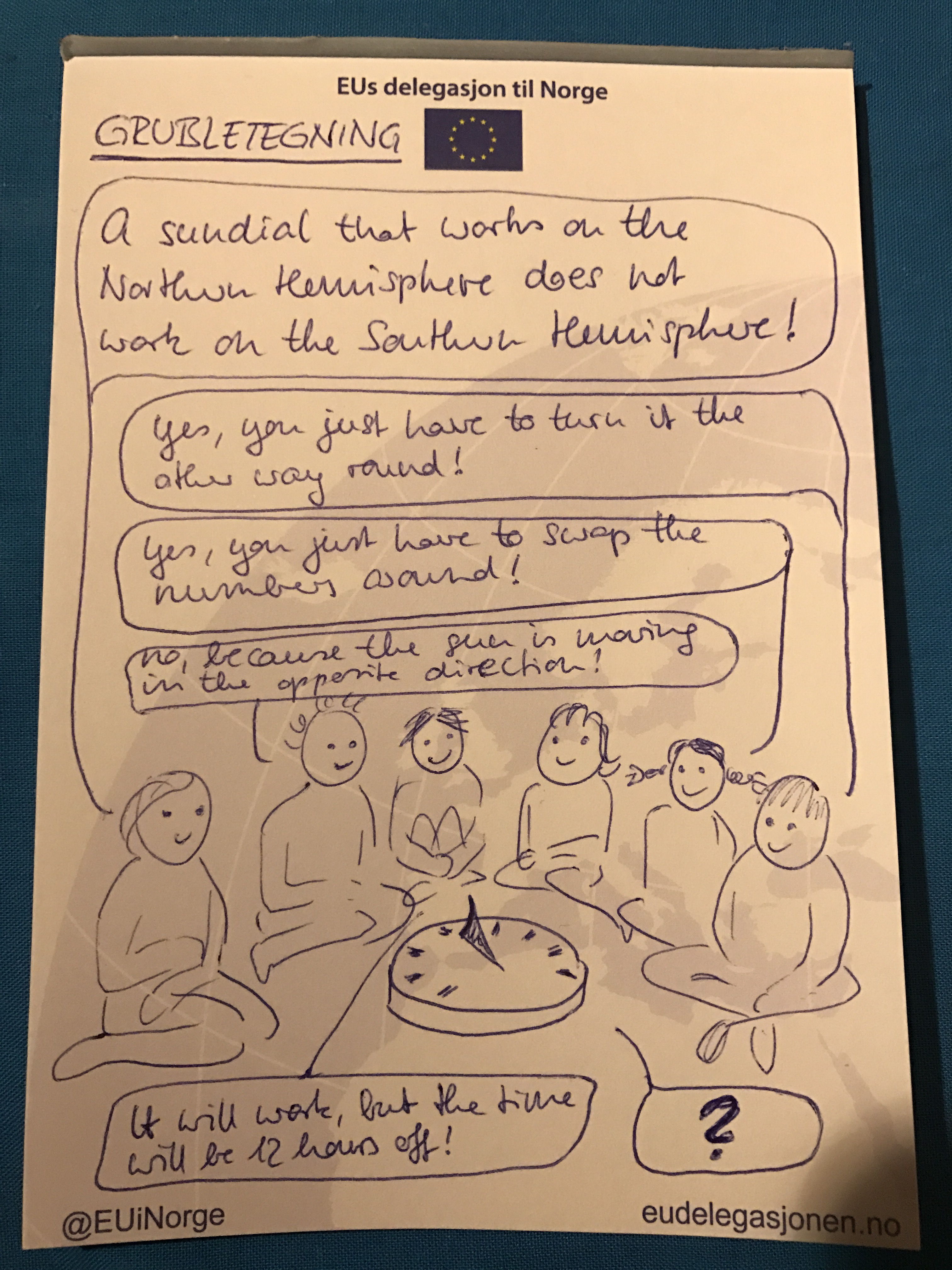
This can then be used to spark discussion in a student group. Since many possible misconceptions are made explicit on the sketch itself, it is easy for students to identify with one of the answers and explain why they think that it is the correct one. It is also useful to use answers to argue against, to use them as a starting point for experimentation, to bridge between school science and the real world. I really like this format and think it could be a very useful tool in science outreach, too!
And I think making many different possible answers explicit is actually the most important feature of this tool. My first Grubletegning-sketch (which I did based on a vage memory and before checking out the naturfag.no website) is not nearly as good for sparking thoughts and discussions as it could be if it was laying out different lines of argumentation!
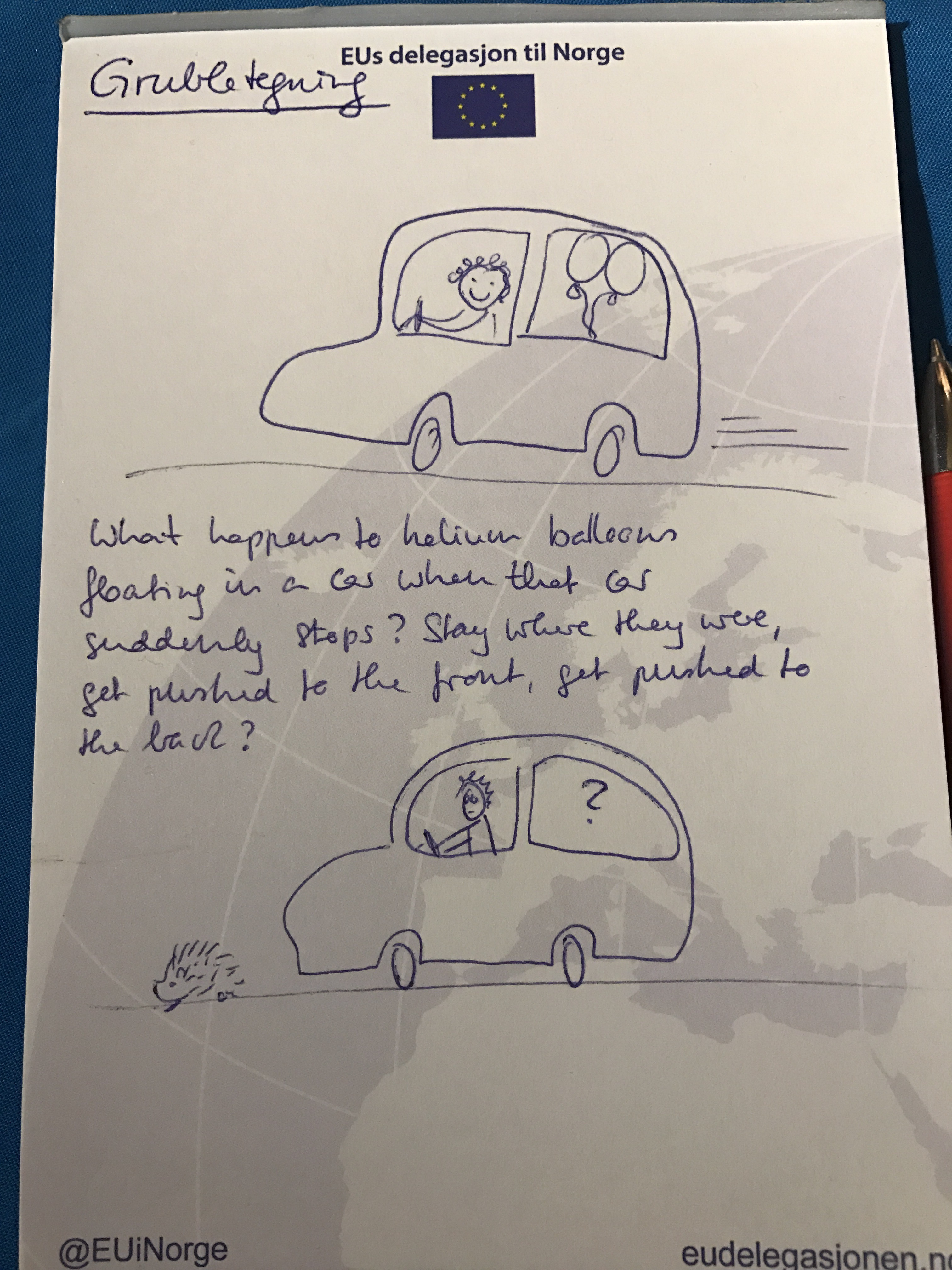
Of course, in the end it is not very different from a multiple-choice exercise, with the different distractors giving the different answer options. But how much more appealing is it when combined with a nice sketch, and actual people (albeit sketched ones) giving the answers, rather than your teacher giving you one correct answer and a couple false ones, and not telling you which one is which? I think this might actually be an excellent tool in outreach to engage people in discussions.
And I am looking forward to coming up with situations that could be used for grubletegninger, and to actually sketching them in a slightly nicer way than I did above. I am trying out a sketch pad next weekend, there might be a huge increase in the quality of graphics on this blog in the near future ;-) Or not, we’ll see ;-)
